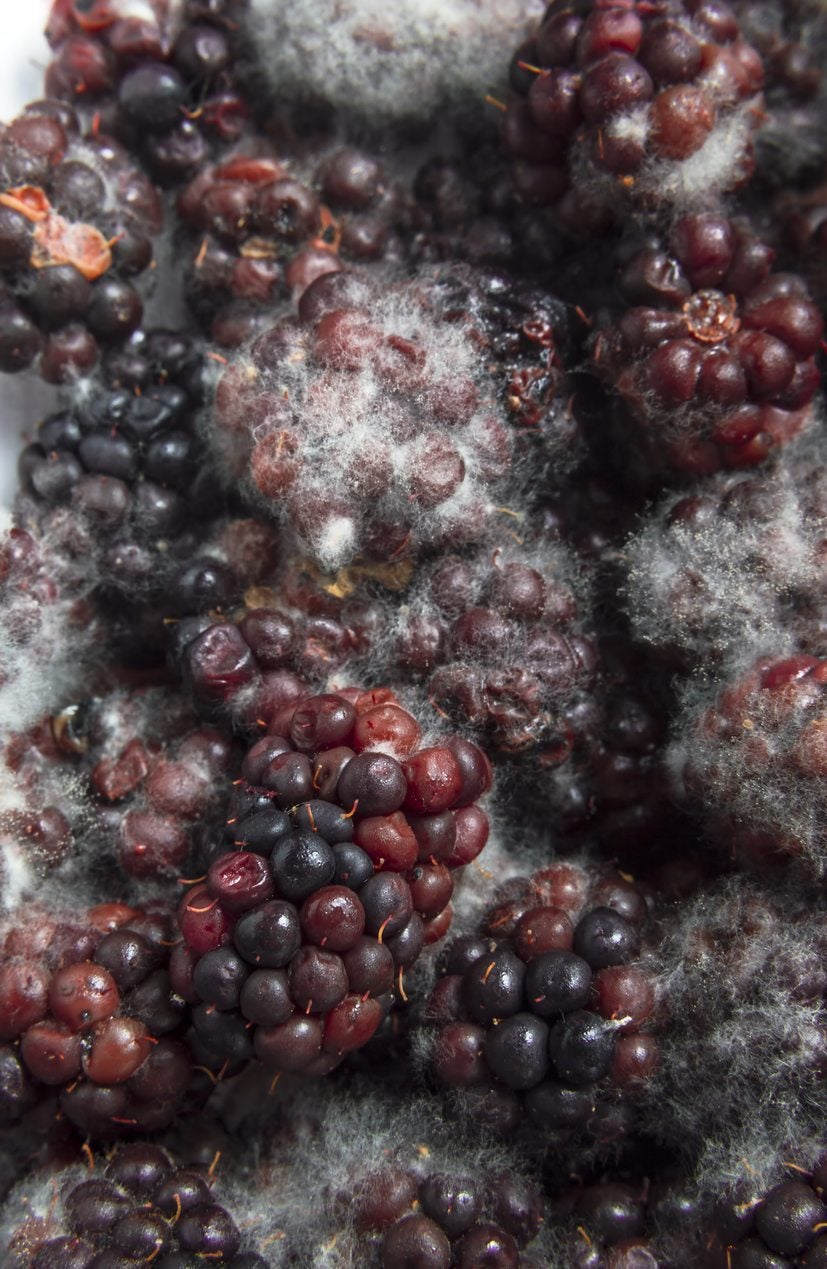Blackberry Penicillium Fruit Rot: What Causes Fruit Rot Of Blackberries


What would summer be without berries? Blackberries are one of the easiest to grow and volunteer as wild plants in many parts of North America. They are quite stoic and hardy and not given to many pest or disease issues, with the exception of fungal problems. Blackberry Penicillium fruit rot is a fungal disease that primarily occurs on post-harvest fruit. Rotting blackberries in their crates occurs due to heavy handling during harvest and storage. Some blackberry fruit rot also occurs on the canes but not in usual circumstances. There are not many more disappointing things than finding fruit rot of blackberries. It may occur in already picked fruit or it may be seen on the plant. In either case, it makes the fruit soft, moldy, and inedible. A few tips can help you preserve your harvest and prevent Penicillium fruit rot on blackberry.
Signs of Blackberry Penicillium Fruit Rot
Penicillium is not the only fungus that produces rot on berries. Botrytis produces the gray mold type of rot while Penicillium develops into the green variety of mold with whitish tones. There are also fungi that produce white, pink, black, and even rusty mold. Penicillium affects the surface of the fruit initially. Small spots will appear which eventually grow together into larger areas of rot. The white fuzzy growth appears towards the end of the infection. The whole berry becomes excessively mushy. This is considered the secondary infection cycle, where fungal spores are ripe and can infect nearby plants and fruit. In fact, once infection occurs in one area, the fungus spreads rapidly in ideal conditions.
Causes of Blackberry Fruit Rot
The fungus favors warm, wet conditions in temperatures between 65 and 85 (18 to 29 C.) degrees Fahrenheit. Penicillium rarely affects immature berries but is more common in ripe fruit. It enters the fruit from any type of injury, whether it is mechanical, insect, or another type of damage. Quite often it is the result of picking and packing which turns once-perfect fruit into rotting fruit in their crates. One item that encourages spore formation is crowded canes. Canes should be spaced at 3 to 5 canes per foot (0.5 m.) in rows 2 feet (0.5 m.) apart. This will help provide adequate airflow to dry canes and prevent fruit rot of blackberries.
Preventing Penicillium Fruit Rot on Blackberry
Good overall plant health can help diminish the effects of any fruit rot. Avoid excess nitrogen which fuels spore production and produces more leafy growth, slowing the ability of the canopy to dry. Managing insects that attack the fruit is crucial to preventing injury that will invite infection. Use floating covers to protect fruit as they are ripening and spray with neem oil several times during the growing season. Pick ripe fruit gently and store them carefully. Some professional growers recommend using fungicide during the ripening process. A fairly safe product to use two weeks prior to harvest is liquid copper fungicide. As a rule, plenty of air space between plants, good cultural practices, and gentle handling of berries will prevent most instances of post-harvest infection.
Gardening tips, videos, info and more delivered right to your inbox!
Sign up for the Gardening Know How newsletter today and receive a free copy of our e-book "How to Grow Delicious Tomatoes".

Bonnie Grant is a professional landscaper with a Certification in Urban Gardening. She has been gardening and writing for 15 years. A former professional chef, she has a passion for edible landscaping.
-
 Grow ‘Karl Rosenfield’ Peony Plants For The Ultimate Frilly Border Beauties And Cut Flowers
Grow ‘Karl Rosenfield’ Peony Plants For The Ultimate Frilly Border Beauties And Cut FlowersFor frilly double magenta peony petals infused with a heady fragrance, grow ‘Karl Rosenfield’ peony plants. Here’s how to cultivate the ultimate plushy blooms
By Tonya Barnett
-
 10 Common Composting Problems That Can Spoil Your Garden Gold – Plus Easy Fixes
10 Common Composting Problems That Can Spoil Your Garden Gold – Plus Easy FixesLearn how to troubleshoot common composting issues before they ruin your stash – from bad smells and bugs to materials not breaking down as they should.
By Susan Albert